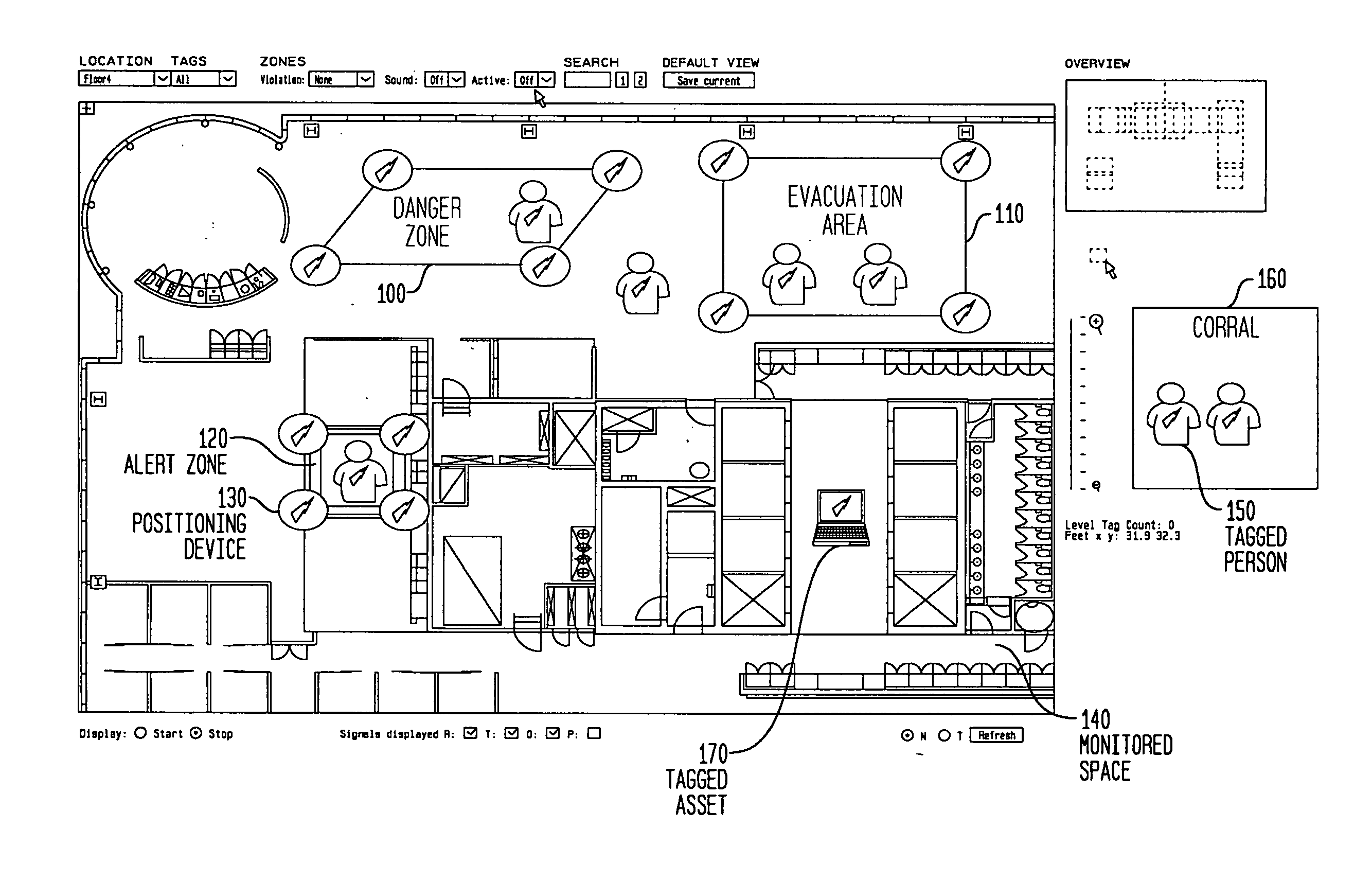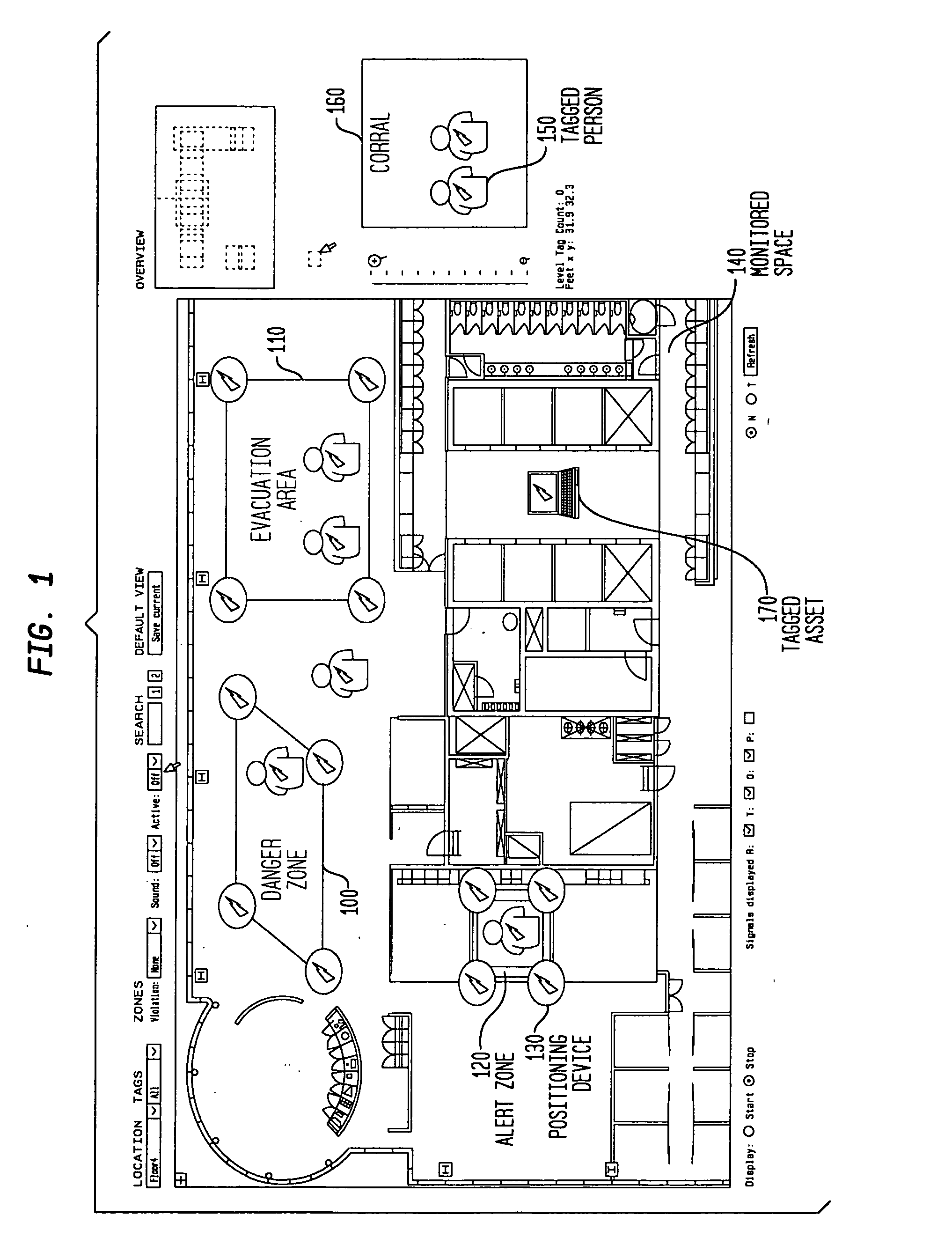Dynamic boundary mapping using position-determination systems
a position-determination system and dynamic boundary mapping technology, applied in the field of asset tracking, can solve the problems of difficult to be accurate in taking measurements, easy to make measurement or drawing errors, labor-intensive approaches, etc., and achieve the effect of greater accuracy
- Summary
- Abstract
- Description
- Claims
- Application Information
AI Technical Summary
Benefits of technology
Problems solved by technology
Method used
Image
Examples
Embodiment Construction
[0015] While various embodiments of the present invention are discussed in detail below, it should be appreciated that the present invention provides inventive concepts that may be embodied in a wide variety of specific contexts. The specific embodiments discussed are merely illustrative of specific ways to make and use the invention, and do not limit the scope of the invention. In other instances, well-known features have not been described in detail so as not to obscure the invention.
[0016] Referring first to FIG. 1, there is shown a block diagram illustrating defined zones for use in a location aware system of at least one embodiment of the present invention. In the present invention, zones may be dynamic or static. FIG. 1 illustrates a user interface for a location aware asset monitoring computer application for use with at least one embodiment of the present invention. While the interface of FIG. 1 represents a computer graphic user interface, any type of display device may be...
PUM
 Login to View More
Login to View More Abstract
Description
Claims
Application Information
 Login to View More
Login to View More - R&D
- Intellectual Property
- Life Sciences
- Materials
- Tech Scout
- Unparalleled Data Quality
- Higher Quality Content
- 60% Fewer Hallucinations
Browse by: Latest US Patents, China's latest patents, Technical Efficacy Thesaurus, Application Domain, Technology Topic, Popular Technical Reports.
© 2025 PatSnap. All rights reserved.Legal|Privacy policy|Modern Slavery Act Transparency Statement|Sitemap|About US| Contact US: help@patsnap.com



